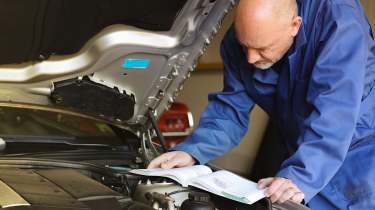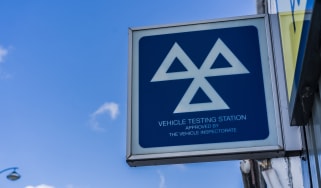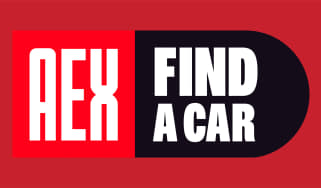Why your car’s service history really matters
A full service history can add a lot of value to a used car. We explain everything you need to know

If you’re planning to sell your car, or are thinking about buying a used car, you have probably seen plenty of car ads using the phrase ‘full service history’ or the abbreviation ‘FSH’. A car’s service history is a record of the routine maintenance that’s taken place throughout its lifetime, and knowing how to check a car’s service history can provide crucial insight into its condition and value.
You can find a car’s service history either in a printed book or online (or sometimes both). Wherever you find it, this record will usually consist of a number of preset ages and mileages, and a technician will stamp it accordingly if a service is carried out at these points in the car’s life. If a car has the correct amount of service stamps for its age/mileage, this is what is classed as a full service history.
If you’re selling a used car, a full service history (ideally supported by receipts for any work carried out and parts used) will indicate to potential buyers that you and any other previous owners of the car have taken good care of it. This extra peace of mind should also boost the car’s desirability and value. If you’re buying a used car, a full service history should also reduce the risk of future breakdowns or big repair bills.
Sometimes there are legitimate reasons for a car to have an incomplete service history; the paperwork could simply be misplaced, or a garage may have forgotten to stamp the book. There are ways of tracking down this missing information, though, so read on to find out more.
What is a car service history?
In most cases, a brand-new car will be issued with a printed service book when it’s sold to the first owner. Provided this book isn’t then misplaced, it should be stamped by every garage that services the vehicle throughout its lifetime. Each stamp authenticates that the work has been carried out. This stamp will also be accompanied by a record of the date when the service was carried out, a log of the car’s mileage at the time and, in some cases, a brief summary of the completed work.
Some particularly well-organised owners might also keep the original receipts and invoices that itemise each job that’s been carried out on the car and the costs incurred. Keeping a collection of these documents alongside the service book will only help to boost the car’s value even further when the time comes to sell it on. Over time, these documents form a detailed history of the maintenance that’s been carried out on a car, allowing you and a potential future buyer to track which parts have been repaired or replaced, and when. It acts as a guide to if, or when, other parts might need replacing, too.
What is a full dealership history?
While most independent garages offer a high standard of servicing and repair, many used car buyers are particularly attracted to a full dealership service history (FDSH) on a car. This means that all the servicing and repair work has been done by a franchised dealership that will be specialist in the particular make and model of car.
A franchised dealership will always use the manufacturer’s recommended parts and fluids whenever your car is in for work, whereas an independent garage may not. While a fully-stamped service book will always be better than an empty one, a complete collection of franchised dealership stamps will be the most valuable to a buyer.
A number of manufacturers now keep an online record of any car that’s serviced by a franchised dealer. These can be retrieved by any dealership in just a few clicks and if you have missing parts to your car’s service history, this can help fill the gaps.

Service history terminology
If you’re buying or selling a used car, you may see used car ads referring to service history in a number of ways. Here are the most commonly used phrases:
- Part service history (PSH): The car has some service stamps but at least one is missing. A long period of time and a significant amount of mileage may have passed between services, so it’s highly recommended to enquire about the reason behind any missing stamps.
- Full service history (FSH): The car has the correct amount of stamps for its age and mileage.
- Full dealership service history (FDSH): The car has the correct amount of stamps and every service has been carried out by a main dealer.
How to find missing service history
If some of a car’s service history is missing, you may be able to recover it. If you know that a car has been maintained by a franchised dealer, your local showroom may be able to produce all of the documentation relating to the car’s maintenance. This is less likely to work for older vehicles, though, as online records are still a relatively new thing.
You will need to prove that you are the vehicle’s owner, ideally by showing a payment receipt signed by the previous owner. Producing the car’s log book (also known as the V5C) won’t be enough, as this only identifies the registered keeper. You’ll also need the Vehicle Identification Number (VIN).
If your car has been serviced by an independent garage, you can ask them to produce copies of any documentation they hold regarding your vehicle, although there’s no guarantee that they’ll have these on file. The same goes for previous owners of the car, you could contact them to find out where the car was serviced or to see if they retained any useful documentation.
It’s important to bear in mind that General Data Protection Regulation (GDPR) privacy rules mean garages may be cautious, and less willing than they once were to share service records.
How to check a car service history online
If you don’t even know which garages have serviced your vehicle, there is a potential solution. The first step is to perform an MoT history check, and you can do this by using our free MoT history checker tool. All you need is the car’s registration number to check the results of the its previous tests. You can also view the test location for each of the car’s MOTs if you can provide the 11-digit V5C log book reference number: this could give you some clues as to where a vehicle was serviced.
If you have a service history for a car you’re thinking of buying or selling you can use this online MoT information to check that the mileages tally and even contact garages to make sure that paper receipts are genuine. Car history check websites like HPI Check can also turn up missing service history information.
Buy a car with Auto Express. Our nationwide dealer network has some fantastic cars on offer right now with new, used and leasing deals to choose from...
Find a car with the experts








